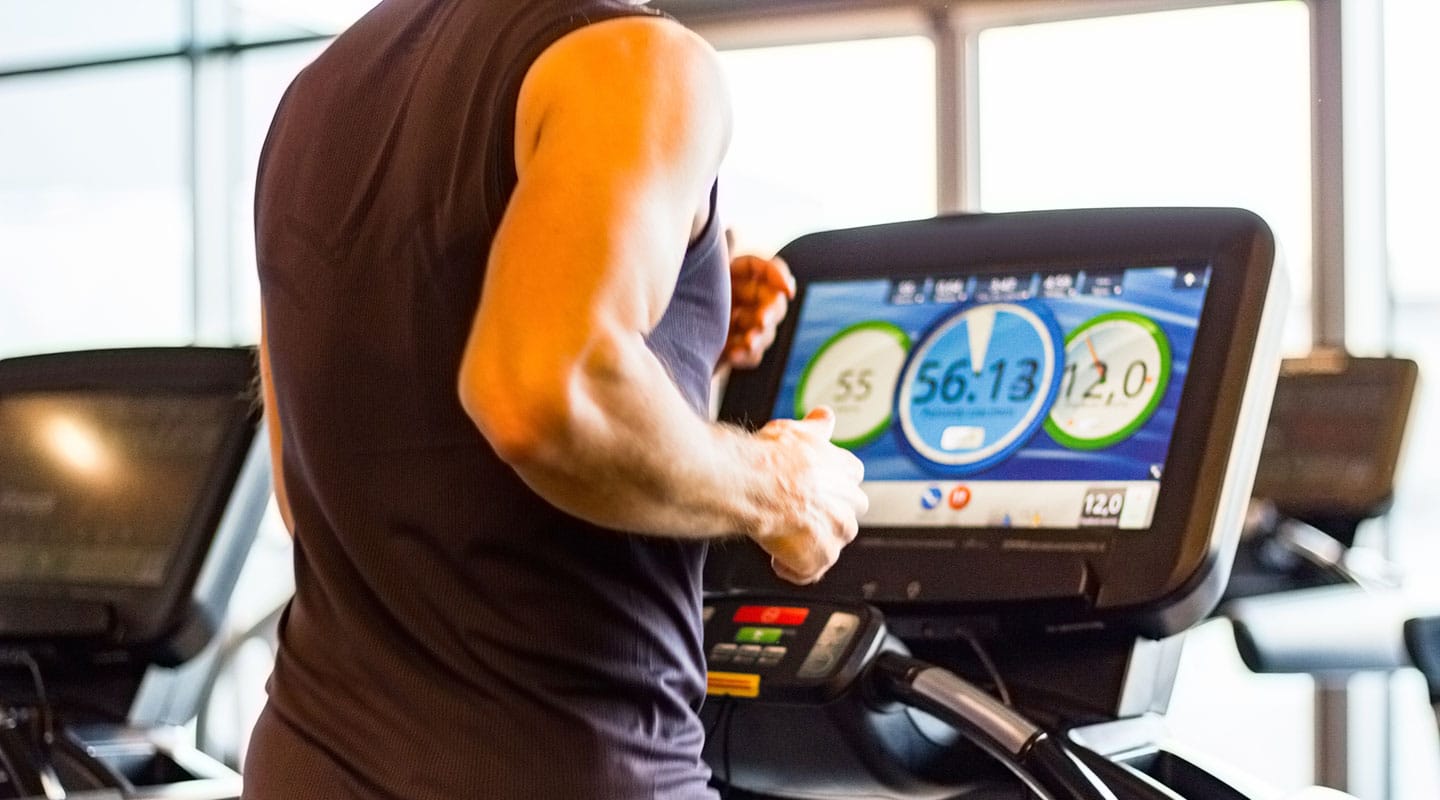“Pace yourself.”
What could be simpler?
You know the distance. You know the time you need to beat. Mix them together and voila: there’s your target pace. All you have to do now is stick to it.
DOWNLOAD YOUR FREE RUNNING PACE CONVERSION CHART
But when your feet are pounding the pavement, trail or track, locking into the right running pace is a lot easier said (or gasped) than done.
It isn’t just beginners who slip up on their speed either. The pros relentlessly target pace in their training, day in, day out. And they still get it wrong.
Just look at Haile Gebrselassie’s world record attempts in 2008 and 2009, says Jean Gaudette.
“In Dubai (2009), Gebrselassie was a mere 23 seconds faster at halfway than his world-record pace in Berlin the year before; however, even this small shift in pace (about 1 second per kilometer) resulted in a crash that left him running 90 seconds slower than Berlin over the final 10K.”
Whether you’re a new runner finding your feet, or a seasoned racer chasing that elusive PB, the right pace is at the core of a great performance.
So take a step back, and soak up our top three strategies for mastering your running pace…
1. LISTEN TO YOUR BODY
People love data, and runners are no different. Watching distances grow and times shrink isn’t just a super-addictive source of motivation. In fact, for many runners, beating the clock is the reason they lace up their shoes each day.
After all, how else do you know if you’re getting better?
But keeping one eye fixed on your watch can also be a distraction. Elite runners set their pace by the numbers, sure, but they also do more than that – they run by feel.
“I think learning to run by feel is incredibly important and something I work on in every workout,” says Nick Arciniaga, who completed the 2011 Houston Marathon in 2:11:30. “If an athlete can learn how they are supposed to feel at any given pace, then it’s easier to know if they are too fast or too slow during a race and adjust.”
Set aside one session a week to focus on running by feel.
Build up to hit your target pace, then take your eyes off the clock. Check your breathing instead, focus on your stride and the rhythm of your body – a small change in pace will often make a big difference to your body, especially when you’re hitting a threshold pace. You just have to listen.
Learn what your target pace feels like so you can lock into it without thinking. That way, the numbers will look after themselves.

2. SLOW DOWN
That might sound counter-intuitive, but runners at every level fall victim to the perils of the too-fast start.
The truth is, pushing yourself means pacing yourself. Hammering it out from the start line is a great way to crash later on; when it comes to pace, start at a level you can sustain.
For newbies, that means not being embarrassed about the pace you’re comfortable with…
If you’re often out of breath and staggering in pursuit of your target pace, take things down a notch. Feel out the pace that’s right for you (and not anyone else!), and master it before you try to set the running world on fire.
For hardened veterans of the road, track or trail, it means learning to conserve your energy. The days of ‘putting time in the bank’ by belting the first few miles are long gone – top coaches are talking more and more about the power of totally consistent pacing, and even negative splits.
When it comes to running pace, consistency is king. So slow things down and start as you mean to go on.
READ MORE:
- Krissy Moehl: Eighteen years of hard knocks (and counting)
- 6 motivational training tips all runners should start using today
- Is your running gait letting you down?
3. PRACTICE, PRACTICE, PRACTICE
Like anything else in life, regular practice is the recipe for success. The secret is simple: the more you practice running at your goal pace, the easier it’ll be to lock in and sustain it.
That’s why running at your goal pace needs to be at the heart of your weekly routine. Swap in a pacing practice session at least once a week to start enjoying the results.
This isn’t HIIT, but the same principle applies. Work harder, not longer.

Slice your training into work periods of running at your target pace, and recovery periods where you slow right down, or even walk it off. Rinse and repeat for a few rounds, then head home.
The pace you go and the rest you take will depend on your goal pace. Here are some examples shared by Ed Eyestone, ex-Olympic marathoner and current road racing expert…
5K Pace
A 5K pace is already pretty intense, so keep your working distances short; anywhere between 800 and 1200 metres. For example, run 6-8 intervals of 800m at your target pace, being sure to take 1:1 recovery time.
10K Pace
“At 10K race pace, you should be running just under your VO2 max – a demanding intensity. So keep intervals to a max of two miles and total 10K race-pace volume per workout to four miles.”
Try doing four intervals of one mile at that demanding target pace, again taking 1:1 recovery time.
Half Marathon
A lower target pace means you can (not too) comfortably drop recovery periods, focusing on sustaining your target pace the whole way through the run.
“Start with three miles and increase by a half-mile every week until you are comfortably running at half-marathon race pace for eight miles. Give yourself at least one easy recovery day before and after these workouts. Cap your tempo sessions at eight miles (plus warmup and cooldown). Otherwise, the workout too closely mimics an actual race, which requires extended recovery.”
READY TO PICK UP YOUR PACE?
Subscribe to Soles by MICHELIN to download your own running pace conversion chart
KEEP IT UP
Perfect running pace isn’t a superpower.
It’s a skill, like any other. Nailing your pace means working hard, and putting in the time and practice.
The flipside is that any runner can radically improve their performance through better pacing. You just need to step back, feel it out and put pacing at the core of your training.
So what are you waiting for? Get out there and pace yourself!
